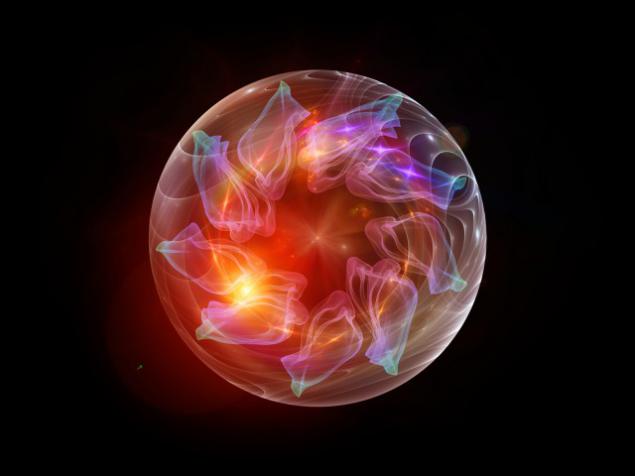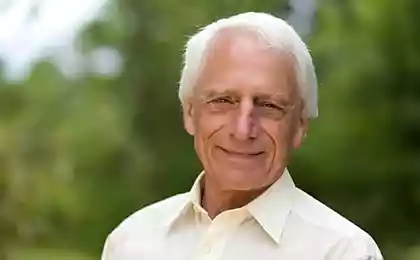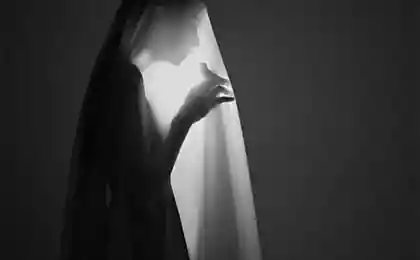631
Focuses of the subconscious that we are aware of many things without even realizing it
Your subconscious smarter than you think dumaeteMy that keeps everything under control when our brains to solve puzzles or reading the word, says Tom Stafford. But the new experiment shows how deep in our subconscious takes this process.

The fact that we know how to think - a common misconception. At the time when I travel the world, I go and talk, I was overwhelmed by the thought.
"What is for dinner" - I ask myself. Or think: "I wonder why she did it?" And I try to understand it.
To suggest that this is my experience - a full report on the activities of my mind, of course, but quite wrong.
There is something with which all psychologists agree - "the subconscious." It performs a lot of work in the process of thinking. If I ask myself what the name of the capital of France, the answer just comes to mind - Paris. If I decide to move my fingers, they begin to move back and forth along a complex scheme, which I deliberately did not prepare, but which gave me to use my subconscious.
In psychology, many argue that the subconscious mind does, and that requires conscious thought. Or, to use the name of the well-known article on the subject, the subject of the debate is the question: "The subconscious - smart or stupid»?
One of the popular ideas about this is that the unconscious mind can prepare simple steps to deliver basic facts, recognize objects, and perform simple movement. But a comprehensive knowledge, which includes planning, logical thinking and the ideas of association requires conscious thought.
A recent experiment conducted by a team from Israel, can refute this position. Run Hassine and his colleagues used an unusual visual trick called "continuous suppression of outbreaks" in order to put the information into the brain of the subjects so that they do not realize it. It sounds pretty complicated, but in fact it is very easy.
The technique uses a feature of our brain. We have two eyes, and our brain is usually trying to connect the two resulting images into a single image, a single view of the world.
The experiment used special glasses that for each eye test broadcast his image. For example, one eye sees a quick change of subject of glowing bright squares that distract him so much that when really important information is transmitted to him in the other eye, the subject did not immediately realize it.
In fact, to achieve the realization of the proposed information takes a few seconds (but if you close one eye in order not to see the colored boxes, you can immediately see the "suppression" of information).

The experiment was Hassina to "feed" the subconscious simple arithmetic problems. Questions were similar to something like "9 - 3 - 4 =?", And they are accompanied by fully visible presentation of the target, which the subjects had to say aloud as fast as possible.
The target number could be a right answer to the arithmetic problem (in the above example, the number 2) and wrong (for example, number 1).
The result was amazing.
The test is much faster pronounced the target number, if it was the right answer. This shows that the problem has been treated and resolved mind, though they do not realize, and that they were prepared to give the correct answer faster than wrong.
This result suggests that the ability of the subconscious is much broader than previously thought. Unlike other tests subconscious processing, the test - not an automatic reaction to the proposed stimulus, because it required the test accurate response in accordance with the rules of arithmetic. The report on the study says that the method used to "change the rules in the study of the unconscious" and that "unconscious processes can also perform all the basic functions performed by the conscious processes».
This is very serious allegations, and the authors admit that it is necessary still a lot of work, because we are only beginning to explore the power and capability of our subconscious. Like an iceberg, much of the work of our mind remains hidden from the eyes of the observer. And experiments similar to that described, give an idea of what lies beneath the surface.
via www.bbc.com/future/story/20150217-how-smart-is-your-subconscious

The fact that we know how to think - a common misconception. At the time when I travel the world, I go and talk, I was overwhelmed by the thought.
"What is for dinner" - I ask myself. Or think: "I wonder why she did it?" And I try to understand it.
To suggest that this is my experience - a full report on the activities of my mind, of course, but quite wrong.
There is something with which all psychologists agree - "the subconscious." It performs a lot of work in the process of thinking. If I ask myself what the name of the capital of France, the answer just comes to mind - Paris. If I decide to move my fingers, they begin to move back and forth along a complex scheme, which I deliberately did not prepare, but which gave me to use my subconscious.
In psychology, many argue that the subconscious mind does, and that requires conscious thought. Or, to use the name of the well-known article on the subject, the subject of the debate is the question: "The subconscious - smart or stupid»?
One of the popular ideas about this is that the unconscious mind can prepare simple steps to deliver basic facts, recognize objects, and perform simple movement. But a comprehensive knowledge, which includes planning, logical thinking and the ideas of association requires conscious thought.
A recent experiment conducted by a team from Israel, can refute this position. Run Hassine and his colleagues used an unusual visual trick called "continuous suppression of outbreaks" in order to put the information into the brain of the subjects so that they do not realize it. It sounds pretty complicated, but in fact it is very easy.
The technique uses a feature of our brain. We have two eyes, and our brain is usually trying to connect the two resulting images into a single image, a single view of the world.
The experiment used special glasses that for each eye test broadcast his image. For example, one eye sees a quick change of subject of glowing bright squares that distract him so much that when really important information is transmitted to him in the other eye, the subject did not immediately realize it.
In fact, to achieve the realization of the proposed information takes a few seconds (but if you close one eye in order not to see the colored boxes, you can immediately see the "suppression" of information).

The experiment was Hassina to "feed" the subconscious simple arithmetic problems. Questions were similar to something like "9 - 3 - 4 =?", And they are accompanied by fully visible presentation of the target, which the subjects had to say aloud as fast as possible.
The target number could be a right answer to the arithmetic problem (in the above example, the number 2) and wrong (for example, number 1).
The result was amazing.
The test is much faster pronounced the target number, if it was the right answer. This shows that the problem has been treated and resolved mind, though they do not realize, and that they were prepared to give the correct answer faster than wrong.
This result suggests that the ability of the subconscious is much broader than previously thought. Unlike other tests subconscious processing, the test - not an automatic reaction to the proposed stimulus, because it required the test accurate response in accordance with the rules of arithmetic. The report on the study says that the method used to "change the rules in the study of the unconscious" and that "unconscious processes can also perform all the basic functions performed by the conscious processes».
This is very serious allegations, and the authors admit that it is necessary still a lot of work, because we are only beginning to explore the power and capability of our subconscious. Like an iceberg, much of the work of our mind remains hidden from the eyes of the observer. And experiments similar to that described, give an idea of what lies beneath the surface.
via www.bbc.com/future/story/20150217-how-smart-is-your-subconscious
5 of these wonders of the brain, described in the book "Alice in Wonderland"
Caviar "white gold" is priced at $ 40,000 per teaspoon considered the most expensive food in the world























